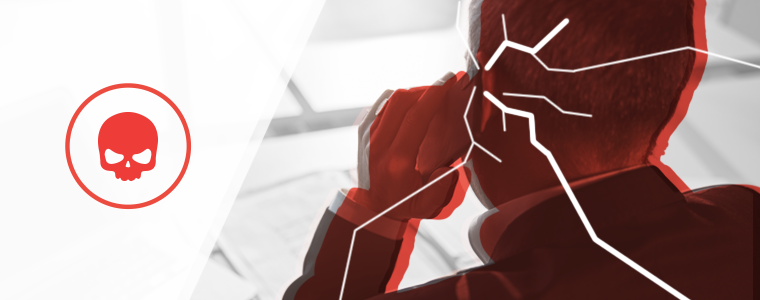What is Ransomware?
Ransomware is a variety of malware that restricts users from accessing their systems or personal documents and demands a ransom in exchange for regaining access. Usually, ransoms are payable with cryptocurrency.
How it Works
You can typically activate ransomware by opening a harmful link or attachment. When this occurs, the ransomware encrypts your documents and data, rendering them inaccessible. An attacker can use one of many methods to access and infect your device or network, including:
- Malspam: Malicious spam or malspam refers to emails that carry harmful software. These emails may contain a link to a malicious website or dangerous Word documents or PDF attachments. The malware infects the device or network when the victim clicks the link or opens the attachment.
- Spear phishing: Spear phishing targets specific individuals or organizations by utilizing personalized information. A bad actor will send an email containing harmful links and attachments that appear to be from a known contact.
- Malvertising: Malvertising uses online advertising to distribute malware requiring little or no user interaction. These advertisements can appear on any site, even trusted ones.
Who is a Target?
A bad actor may focus on universities, as these institutions have smaller security teams and a diverse user base who frequently share files, making it more viable to infect their network. The recent ransomware attacks on Howard University in 2021 are an example of this event.
Targeting law firms, medical facilities, and government agencies may also yield promising results for attackers. These organizations often need immediate access to their data or need to safeguard sensitive information and might be more likely to pay the ransom.
Ransomware Removal and Protection
Removing ransomware is not that challenging — IT services and online tutorials can help you erase ransomware from your device. But removing it won’t decrypt your files. Most malware is incredibly sophisticated, making it impossible to decrypt without access to the key. To protect your data, you’d want to:
- Install antivirus and whistling software.
- Download software from reputable sites alone.
- Back up your data regularly.
- Update your operating systems and software frequently.
Safeguard Your Data With Agio
A single ransomware attack can leave a company without any readable data. The best way to minimize the damaging effect of this event is to safeguard your files.
At Agio, we offer comprehensive cybersecurity software for various industries, including healthcare, which is often targeted by these attacks. Our 360° security systems will proactively monitor and mitigate threats. To find out more about our solutions, contact us online today.
Share post
Featured Posts
Connect with us.
Need a solution? Want to partner with us? Please complete the fields below to connect with a member of our team.




